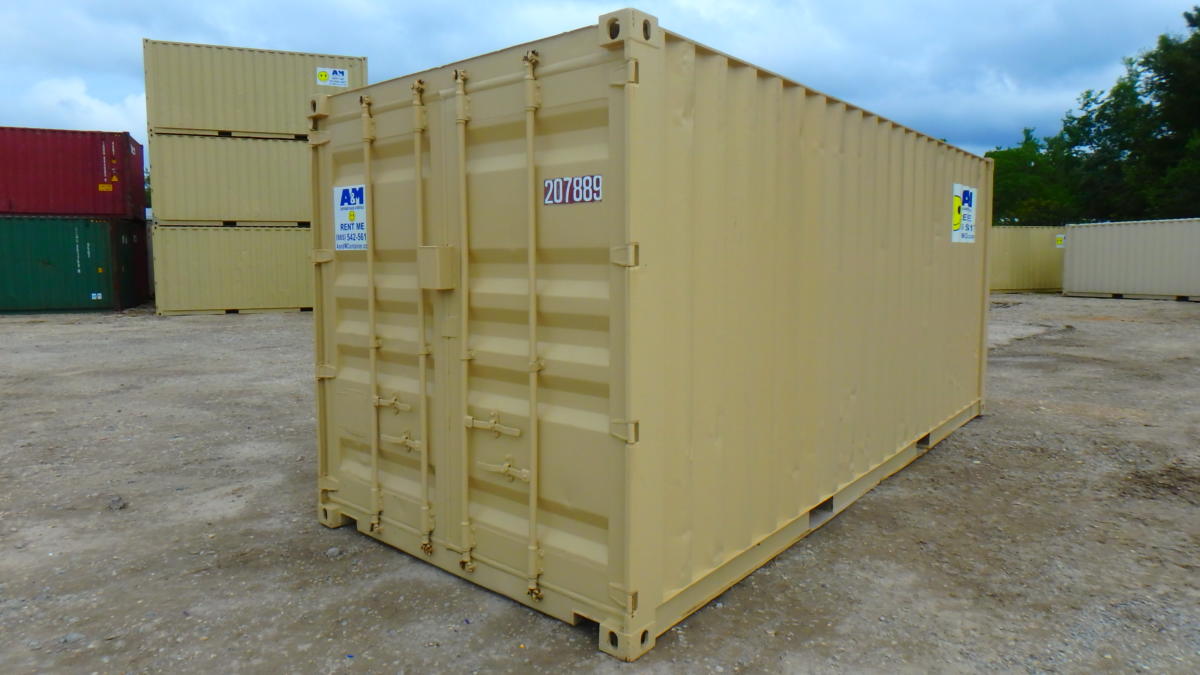Shipping container homes are increasingly popular as sustainable and inexpensive housing options. There are more than 300 million freight containers that sit empty at ports all over the globe, so the resources are certainly there. Real estate experts are projecting a rising synergy between storage containers as a housing alternative paired with traditional prefabricated building options.
One of the largest challenges that comes with converting a container into a home is finding a sufficient way to insulate it. Living in a hot box in the summer isn’t appealing to many, nor is living in a cold one in the winter, either. Insulation is critical.
Challenges of Shipping Container Home Insulation
The main challenge when it comes to insulating your container home relates to the shallow depth of the walls. Yes, the metal structure of the container overall is sturdy and durable, but that lack of thickness will pose a challenge for proper insulation.
Prior to deciding on an insulation material, you’ll have to think about how you plan on building out the walls. If your plan is to connect many shipping containers to create a multi-container home, it may not be quite such an issue to add space on the inside of the walls, due to the extra square footage of the whole house. If, on the other hand, you’re looking to make a tiny home from just one or two containers, space will be harder to come by.
You’re best off adding insulation on the exterior and covering it with exterior cladding. Then, you can either leave the inside walls as exposed metal or cover them with plaster designed for interiors.
Spray Foam Insulation
One of the easiest and fastest ways to insulate a container home is to use spray foam insulation. This can be sprayed directly onto both the walls (interior and exterior). Many shipping containers come coated with toxic paints to help them withstand life in the ocean. Spray foam insulation acts to trap the VOCs that could seep into your home.
Water-blown spray foam insulation expands while it hardens, insulating the home through tiny plastic bubbles that come together in the insulation’s interior.
Cotton Insulation
A critical goal of sustainable homes is to reutilize and reuse as much as possible. If you wish to be eco-friendly, you may want to use a natural, cotton-based insulation that comes from recycled, post-consumer denim. Denim insulation is treated with boric acid, which is a natural fire retardant. However, denim insulation requires a vapor barrier, because if it gets wet, it becomes dense, loses some of its insulation properties, and takes a long time to dry.
Wool Insulation
Sheep wool is another natural insulation alternative that comes from renewable and natural materials. Offering high performance and environmentally friendly alternatives, sheep wool is naturally flame retardant, which means you don’t have to treat it with other chemical solutions.
Cork Insulation
Cork insulation is yet another natural insulation alternative, a renewable and biodegradable resource originating from trees. Cork trees don’t have to actually be cut down in order to harvest the cork; instead, the bark from the trees can be harvested every nine years. As a result, cork is “carbon negative” because the cork forests of Portugal capture carbon right out of the atmosphere.
Cork is also attractive for its excellent acoustic properties, forming an buffer between the interior of the home and the metal walls of the container.
What We Offer: Insulation
Here at A&M, we offer one of two things:
- Basic Insulation Package with 2” thick Styrofoam insulation framed with aluminum trail (unfinished).
- Fully Lined and Insulated:Interior framed with 2×4 lumber, insulated with 2” thick Styrofoam board insulation and finished with 3/8” sanded one side plywood (unpainted)
Contact A&M Container
If you need a shipping container to convert into a home, and want to inquire about your insulation options, contact us for rates.

